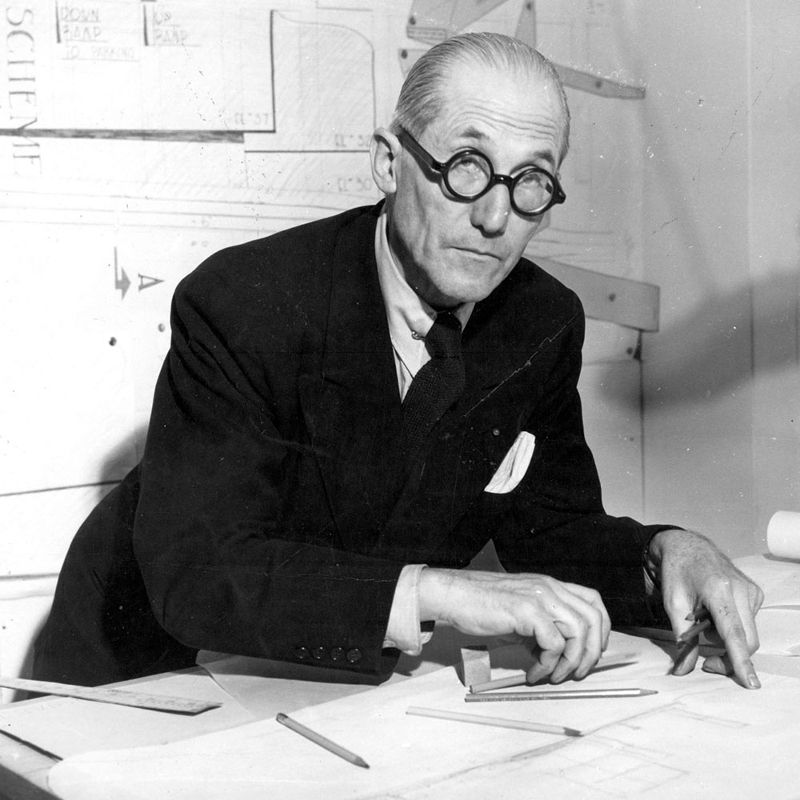Le Corbusier (1887–1965) was a Swiss-French-born architect, urban planner, and writer. He is renowned for his creations of buildings and master plans across the world from France to Germany and from India to the United States and South America. Le Corbusier died of a heart attack while swimming on 27 August 1965 at the age of 77.
Contents
Wiki/Biography
‘Charles-Edouard Jeanneret’, better known as Le Corbusier, was born in the city of La Chaux-de-Fonds, Switzerland on Thursday, 6 October 1887 (aged 77 at the time of death). When he was fifteen, he went to the La Chaux-de-Fonds Art School. In 1902, he enrolled himself in the Higher Course of Decoration. Le Corbusier never received formal training in architecture.
Le Corbusier in his youth
Family
parents and siblings
Le Corbusier’s father, Georges Edouard Jeanneret, was a watch engraver, and his mother, Marie Charlotte Amélie Jeanneret-Perret, was a piano teacher. Corbusier had an elder brother, Albert Jeanneret, who was a Swiss violinist.

Le Corbusier with his mother and brother
wife and children
Le Corbusier married Yvonne Gallis, a former fashion model from Monaco, on 18 December 1930. The couple had no children. Yvonne died in 1957.

Le Corbusier with his wife Yvonne Gallis

Le Corbusier and his wife
relationships/affairs
Le Corbusier had a long-standing relationship with the Swedish-American heiress Marguerite Tjader Harris, even though he was married to Yvonne Gallis.
signature/autograph

livelihood
architectural innovation
Le Corbusier is known for his pioneering contributions to modern architecture. He adopted the principle of functionalism, emphasizing clean lines, open spaces and the use of new materials. One of his iconic architectural masterpieces is the Villa Savoy.

Le Corbusier’s Villa Savoy in Paris, France
Master Plan of Chandigarh
Le Corbusier was involved with Albert Mayer and Maciej Nowicki in the design and planning of Chandigarh, a city in India. He was appointed as the chief architect for the project, which aimed to create a modern and organized city. He designed various government buildings in the city, including the Capitol Complex. He also designed the master plan for Chandigarh.

Chandigarh Master Plan by Le Corbusier

Le Corbusier’s Assembly Palace – Chandigarh, India
Architecture based books
Le Corbusier wrote his ideas in architecture-based books such as “Towards a New Architecture” and “The City of Tomorrow and Its Planning”, which became influential texts in the field of architecture. He contributed to architecture by expressing his theories, ideas and criticisms through his writings.

Le Corbusier’s book – “Towards a New Architecture”

Le Corbusier’s book – “The City of Tomorrow and its Planning”
urban planning
Corbusier developed visionary urban planning concepts that aimed to address the challenges of rapid urbanization. His ideas revolved around functional zoning, tall buildings and green areas. The Radiant City and the Plan Voisin for Paris were among his notable urban planning proposals.

Le Corbusier’s Plan Voisin for Paris
international influence
Le Corbusier’s influence extended beyond his native Switzerland and France. His ideas and designs influenced architects around the world and he played a significant role in shaping the modern architectural movement. His work left a mark on the urban landscape and architectural education.
controversies
The famous architect, Le Corbusier attracted controversy due to his urban planning ideas that often neglected heritage, displaced communities, and lacked human scale. His collaboration with government officials and alleged social engineering in his designs were also criticized.
award
- In 1961, Le Corbusier was awarded the ‘Gold Medal’ from the ‘American Institute of Architects’.
- He was awarded the title of ‘Grand Officer of the Legion of Honour’ in 1964.
Death
On 27 August 1965, Le Corbusier died at the age of 77 of a heart attack while swimming on the French Riviera in Roquebrun-Cap-Martin, France.
Facts/General Knowledge
- Before becoming an architect, Corbusier learned watch engraving and worked as a painter and decorator.
- Le Corbusier was born Charles-Edouard Jeanneret; However, in the 1920s, he changed his name to Le Corbusier.
- He also designed furniture such as sofas and chairs, which are still famous today.
- Le Corbusier met with Albert Einstein at Princeton University in 1964 to discuss “Modular”.

Le Corbusier with Albert Einstein
- He loved mathematics and used mathematical principles in architectural designs.
- Le Corbusier had no formal architectural education but learned it all through practical experiments and self-study.
- After the death of Le Corbusier’s wife Yvonne Gallese, he always kept her non-final ashes with him as a gesture of affection.
- Le Corbusier wore glasses and was blind in one eye by 1918.
Categories: Biography
Source: vcmp.edu.vn

